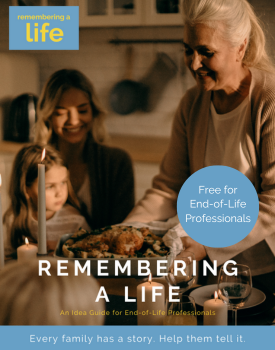Time and showing up, turn most messes to compost, and something surprising will grow.
~Ann Lamont, author
My father-in-law’s spirit lives in my garden. I know this to be true. Just as my husband knows that every spring the cardinals, finches, woodpeckers and abundance of other aviary friends gathering around the bird feeders he tends with such care (as his father did) contain his father’s spirit, too.
Admittedly, before Jerry died, I was not much of a gardener. I tended to him and tended his garden for him for 12 years after his wife died but my approach to growing beautiful things was instinctive rather than educated. Now as a passionate gardener for the past three years, I still do not know the names of most flowers, rarely read directions when planting new blooms. I go about things by ‘I like the way that looks so I’ll put it in.’ And yet my garden grows - its beauty the talk of the neighborhood. Go figure.
I was with Jerry when he died in hospice on December 16, 2017, at the age of 88. It was in the midst of a snowstorm; my husband had to work and tried to get to his father’s bedside in time but could not. My brother-in-law arrived a few minutes after Jerry’s passing and in his grief and sense of loss acted in the way many bereaved people do: uncontrolled, angry, blaming. I had spent five days, all day, with Jerry in the role of family member, grief support specialist and spiritual counselor, and was exhausted. The combination of severe exhaustion, a great sense of loss (my father-in-law was a father to me), the shock of the suddenness of Jerry’s last breath, and my brother-in-law’s actions took their toll, freezing out any expressions of grief. I felt numb. While helping to prepare for Jerry’s funeral, at his funeral and life celebration, and over the next several weeks, a gnawing, pervasive sense of numbness continued. Always having found eventual order in the messiness of tears, I was a crier who wanted and needed to cry but somehow could not.
My personal and professional experience with loss has taught me that every grief has its own voice; and it has taught me that numbness is the absence of giving voice to grief. A counselor in need of counseling in order to process my sense of loss, I sought out direction from a fellow grief professional.
The counselor was a work friend; she knew I loved nature, and flowers, and writing, and making art. When I told her the story of what happened the last day of Jerry’s life, she recommended I first “compost” my grief, then distribute the compost in my garden in spring.
The composting the counselor proposed was two-fold: address both the sense of loss I felt at Jerry’s passing and the sense of loss I felt at my brother-in-law’s unfair words of blame. The process she recommended was multi-layered, including written instructions as follows:
Step 1: Using large pieces of acid free, biodegradable paper, write and draw-out in crayon what happened with my brother-in-law; include any feelings and thoughts about “the story” no matter how messy or unpleasant or unkind. Doing this part of the grief composting process got my tears flowing; I felt a sense of relief.
Step 2: Take the paper and rip it into tiny, tiny pieces; place the pieces in a bowl and burn them; then throw away the ashes.
Step 3: Write and draw “love” stories about Jerry. Express what he meant to me and the beauty he brought to my life, what I will miss about him, and anything else that needed to be said. More tears were released during this step, followed by a deep sense of peace.
Step 4: Read the stories out loud to a concerned listener or loving other, if you so choose. I read my love stories to the counselor.
Step 5: Compost the stories by tearing them into small pieces of paper; place the pieces in a decorative container – like a flower pot. At this point I felt a sense of having put the events of the day of Jerry’s death behind me. This was not the end of my grief, but the true beginning of my grieving process.
Step 6: In spring, mix the torn paper with soil; this is now compost for your garden. In the area where you place the compost, plant flowers you feel Jerry would like. I chose lots of unnamed purple flowers.
Now, every year when in the garden, I feel Jerry’s love and presence in the opening of every bloom.
Since my personal experience, I recommend this particular form of grief composting to grief support clients who like to garden. Just as regular composting is beneficial for your garden’s environment, grief composting can be beneficial in restoring your inner environment – your inner garden – after the loss of a loved one by providing a process for exploring and resolving unresolved feelings; expressing feelings of love and loss; as well as emotionally placing your loved one in a place of beauty.
Grief composting can also serve as a helpful tool in restoring and maintaining a balanced inner environment when dealing with feelings of loss connected to the current COVID-19 outbreak and confinement. The disruption to daily life and activities and lack of social interaction can lead to feelings of grief that call for a process to resolve.


